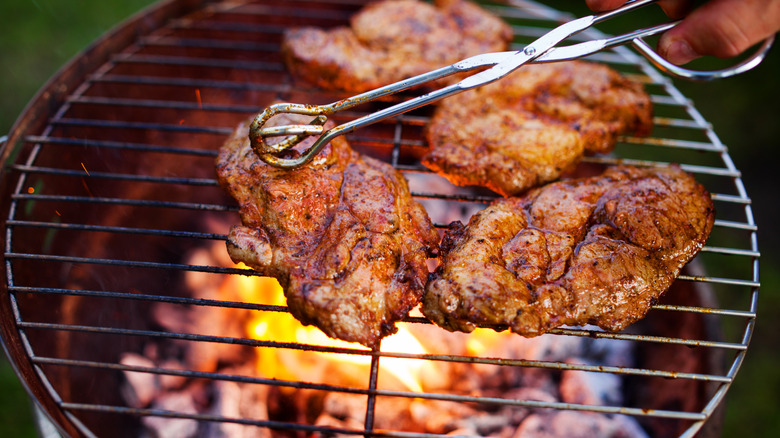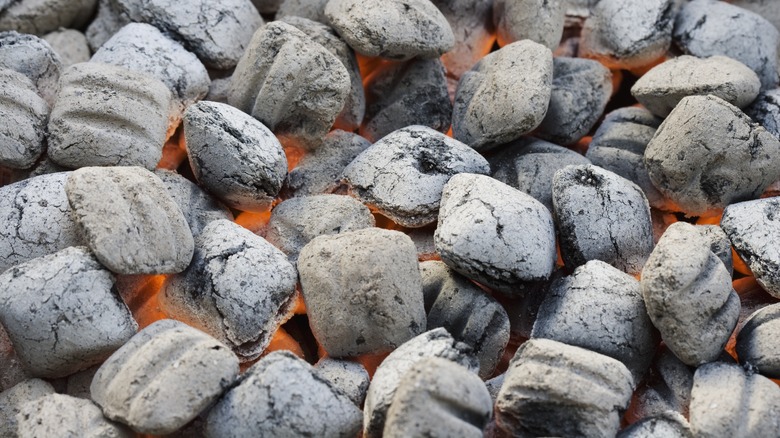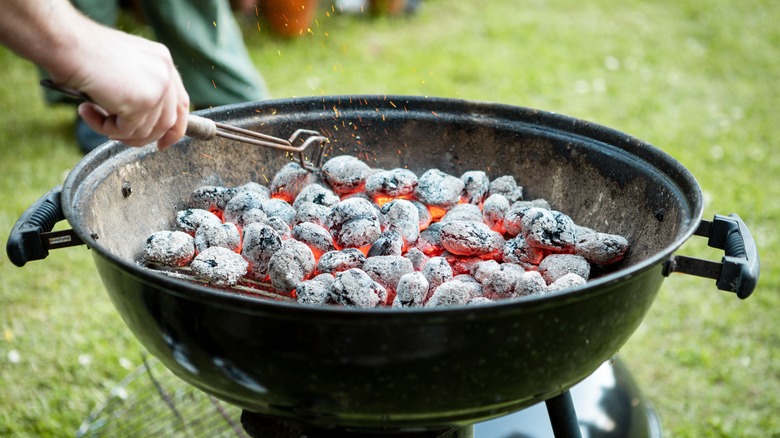The Charcoal Mistake That's Killing Your Barbecue
While chefs can create deliciously smoky cuts of meat with the help of a charcoal grill, this method requires plenty of patience for home cooks to learn about and master. So, if your charcoal grilling endeavors have been lackluster thus far, we might know the source of your woes. When it comes to grilling, it's all about timing, and the charcoal mistake that's probably killing your barbecue is rushing the coals.
Charcoal takes time to properly heat and hold high temperatures, so before you poke and prod the coals on the grill or add your meat, make sure they're white hot first. This consistent coloring means the heat has been dispersed and is being held evenly by the coals. Failing to wait for this proper heat marker and throwing meat on the grill too soon will lead to wasted work and effort. If the coals aren't hot enough, your meat won't cook, and you'll just have to take it off, wait a little longer, and try again. Plus, inconsistently heated coals will result in flare-ups, or bursts of fire, on your grill, which can be dangerous. (And too much flame can also make meat taste like ash.) So, only once all the coals on your grill are white, is when you should begin cooking.
A step-by-step guide on setting up your charcoal
While ensuring that your charcoal is hot enough before grilling is a simple concept to comprehend, you do have to follow a few proper steps to get there first. For starters, arranging charcoal properly on a grill is key. You should be piling the coals in a heap in the middle of your grill grate to ensure the coals keep in contact and spread heat across the grill faster. The exact amount of charcoal you'll need depends on what you're grilling, so follow your recipe accordingly. Most charcoal grills need about 100 lumps or briquettes of coal to get cooking.
Next, add some lighter fluid to the mound of charcoal per the instructions on the fluid's bottle. Squirt the lighter fluid on all sides of the charcoal mound to ensure they catch evenly. After applying the fluid, light the coals with a long-barrel lighter. (Remember to practice caution when using lighter fluid, and never squirt extra lighter fluid on coals that are already lit.) As the coals burn, they will start to turn gray and then white as they become covered with ash. Make sure the grill lid is off while the coals burn as the air feeds the flames. This pre-heating process should take between 15 to 20 minutes.
One other way to ensure your coals are ready
If you don't have lighter fluid, or believe that using lighting fluid is a grilling mistake, you can also use an electric starter or chimney charcoal starter to get cooking instead. It's all up to personal preference. After the coals are white, you can spread them out across your grill with the help of some tongs, put on your grill grates, and get ready to start cooking. (And avoid another grilling mistake that makes your cook time much longer by keeping the lid on to keep the heat circulating inside.)
An additional way to ensure your coals are ready for grilling is to decipher their temperature. If you place your hand roughly six inches from the surface of your grill grates, you can determine the heat levels of the charcoal by how long you can hold your hand there without discomfort. Anything up to ten seconds is low heat, which is ideal for chicken or roasts. If you can hold it for up to six seconds, the coals have reached medium to medium-high heat levels, which is the best range for hamburgers, veggies, and seafood. If you can only hold your hand up for two to four seconds, the heat is high, which is ideal for steak. When in doubt, you can always invest in a charcoal grill with a thermometer. Happy grilling.


